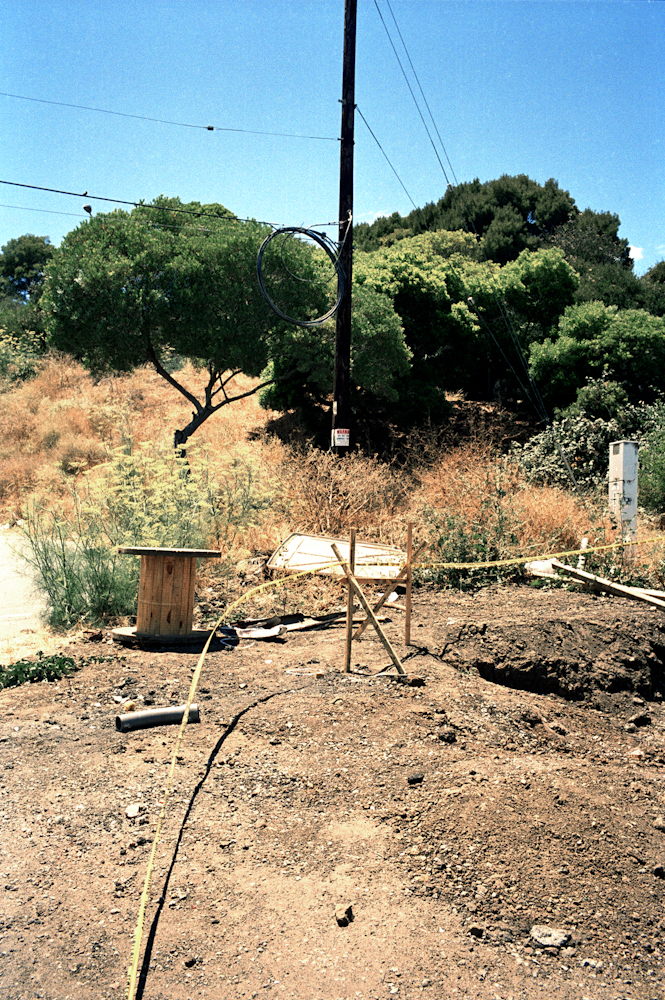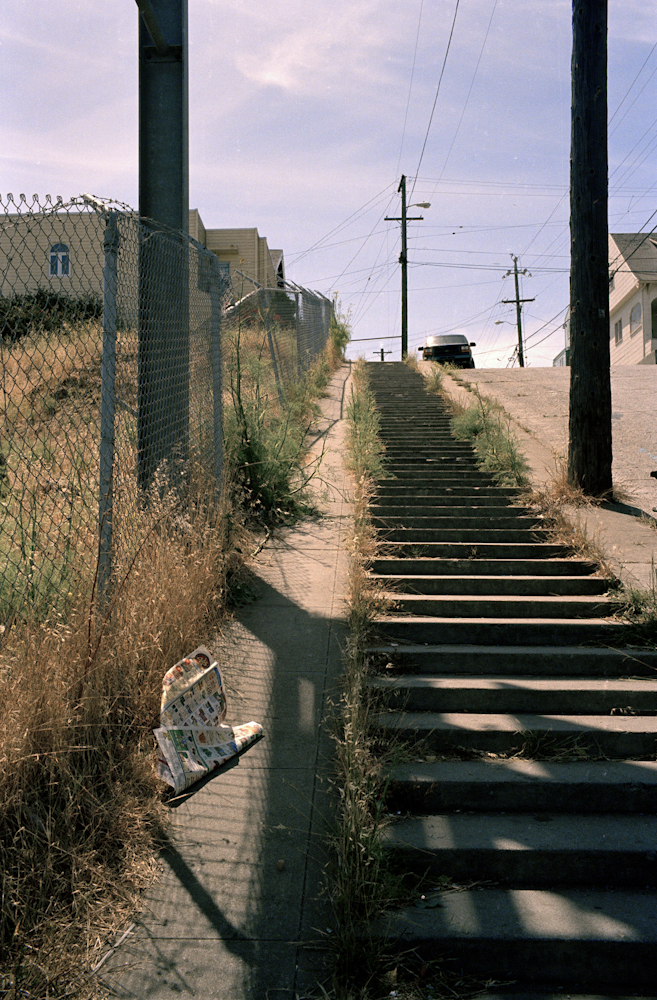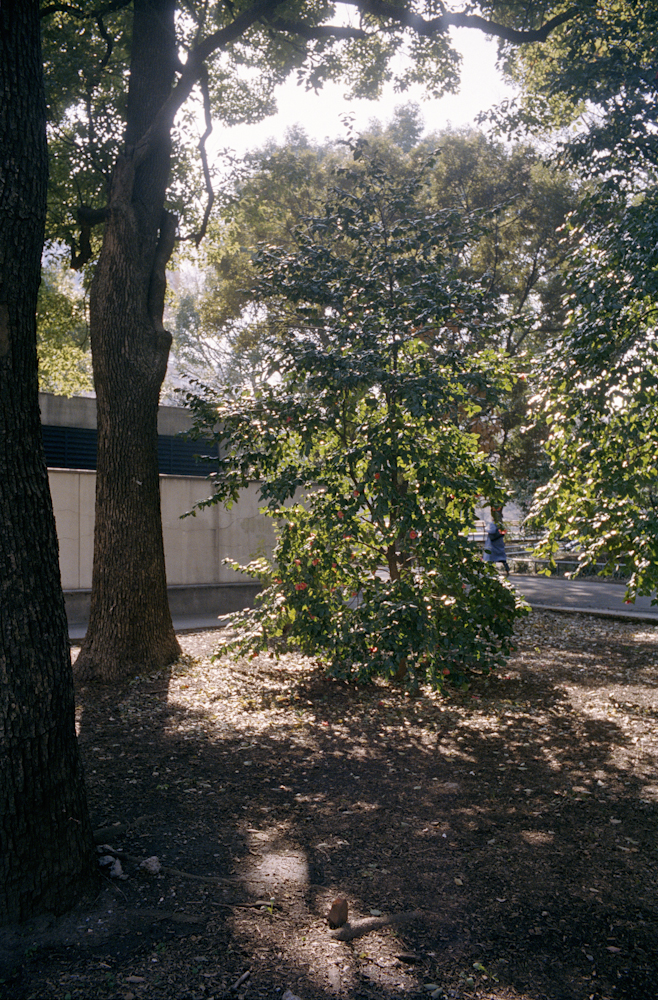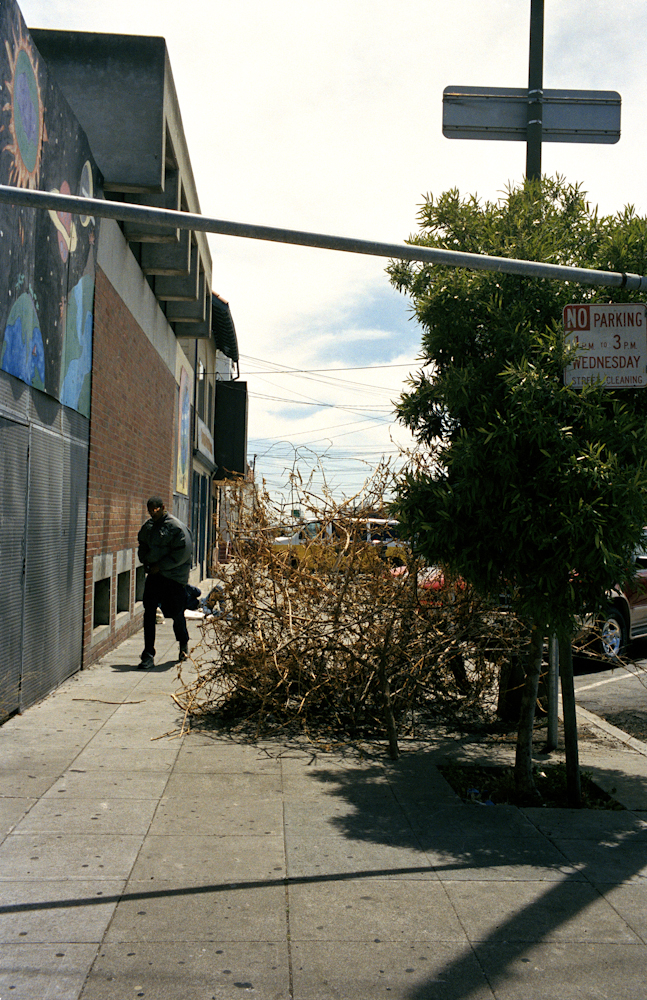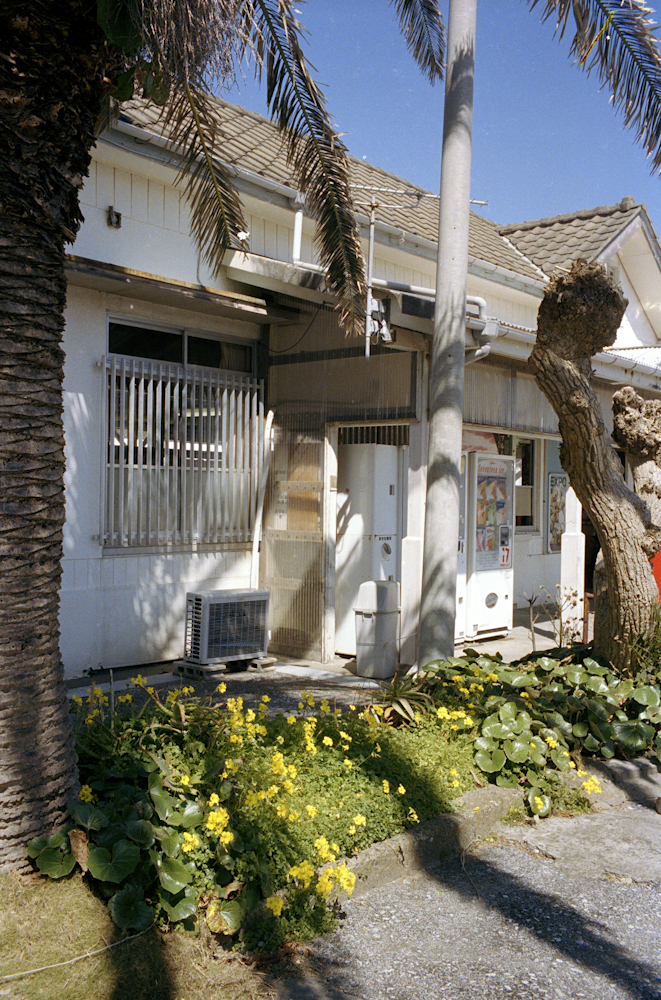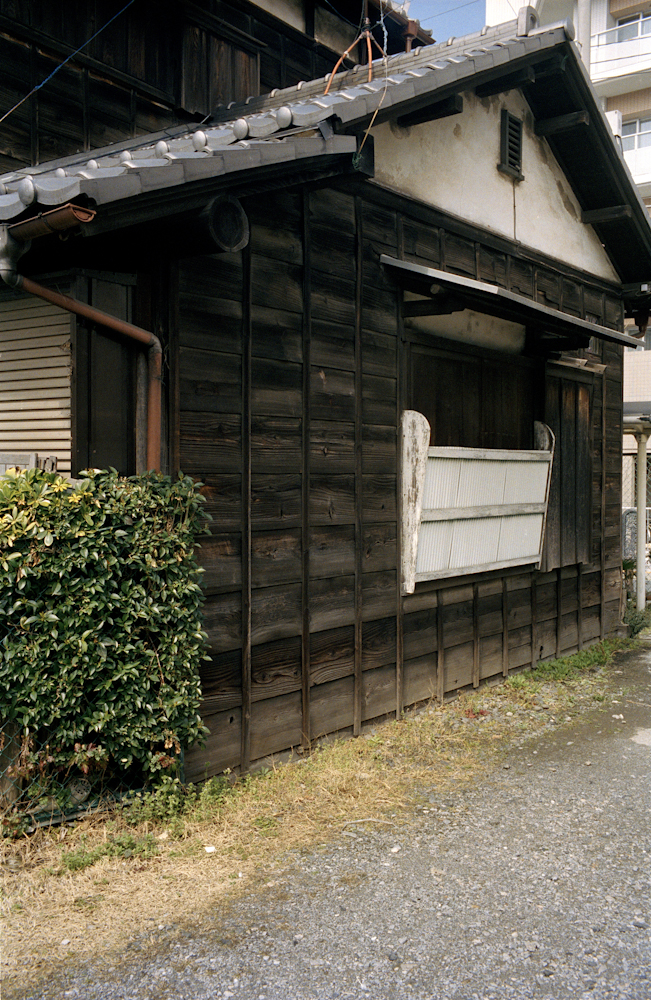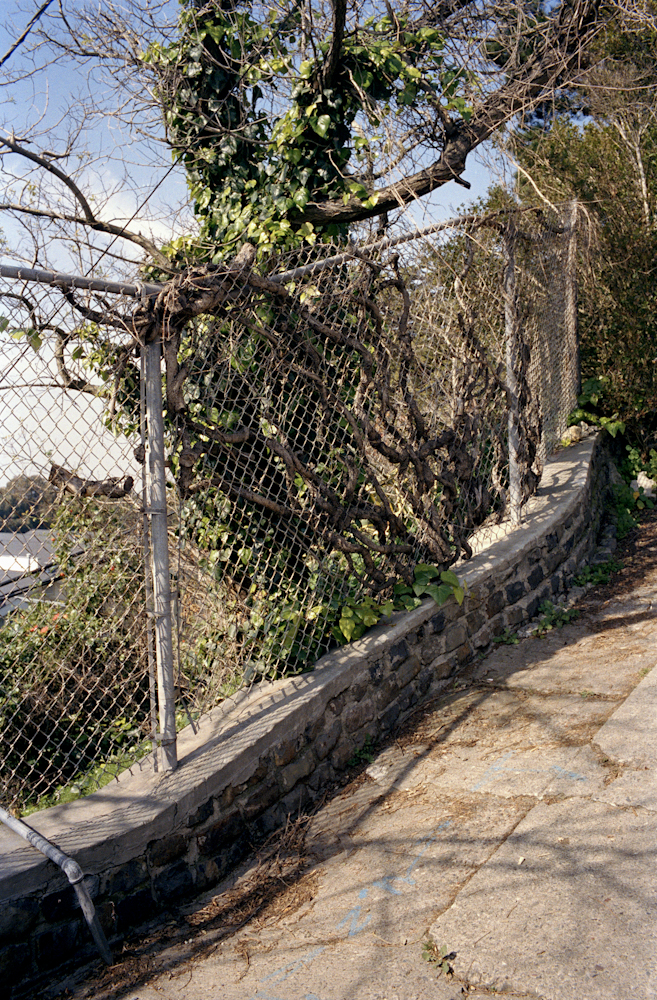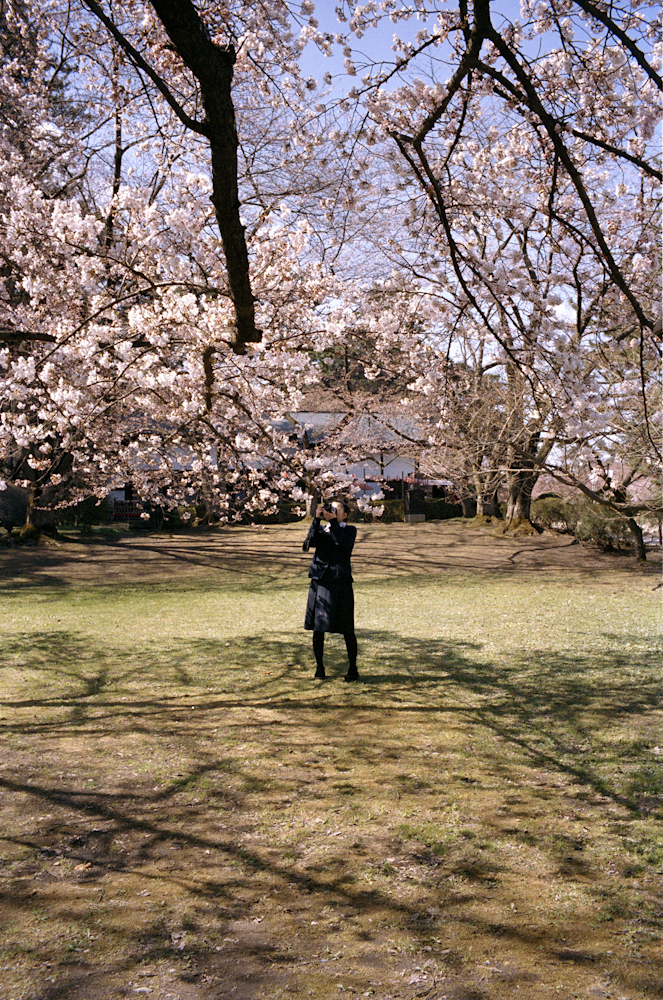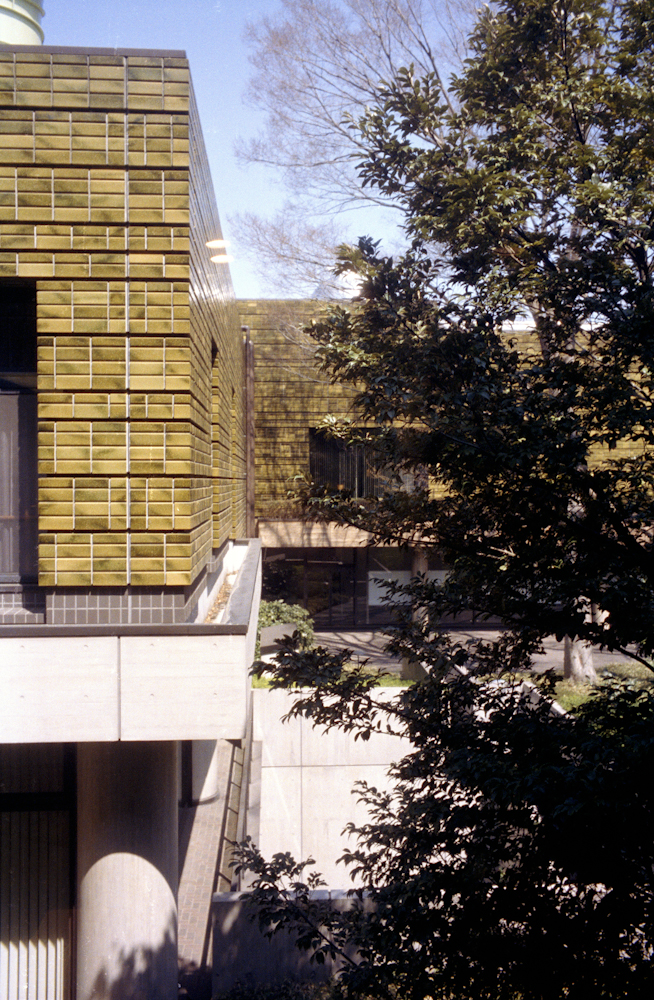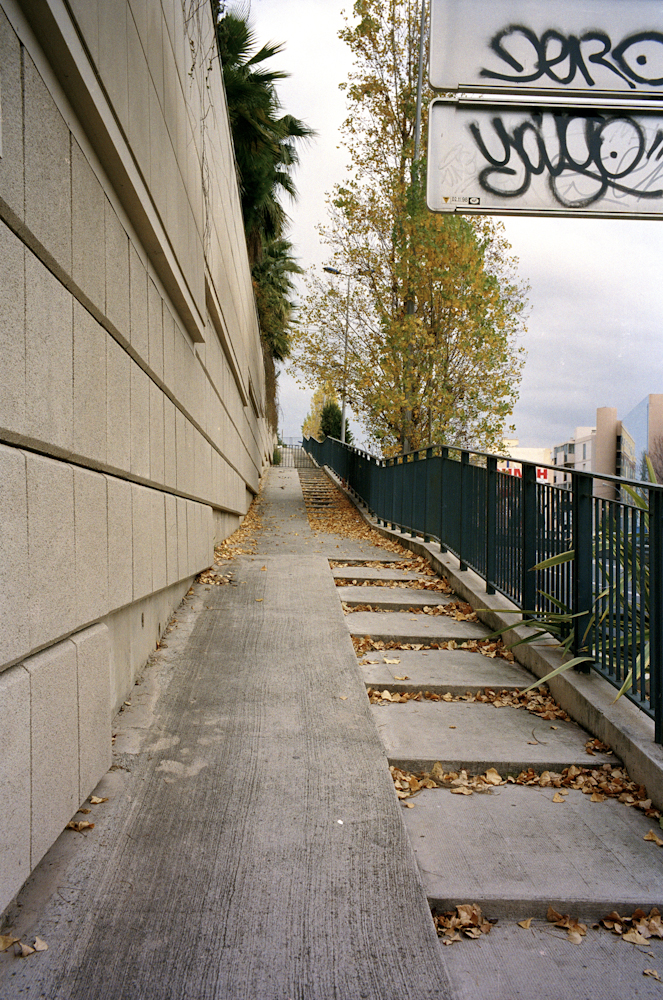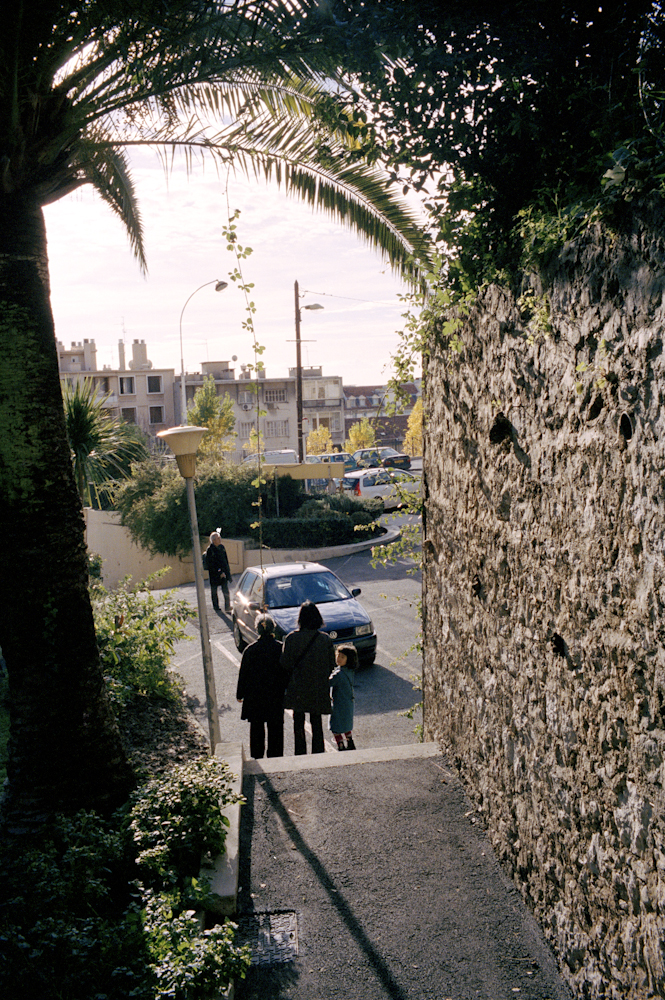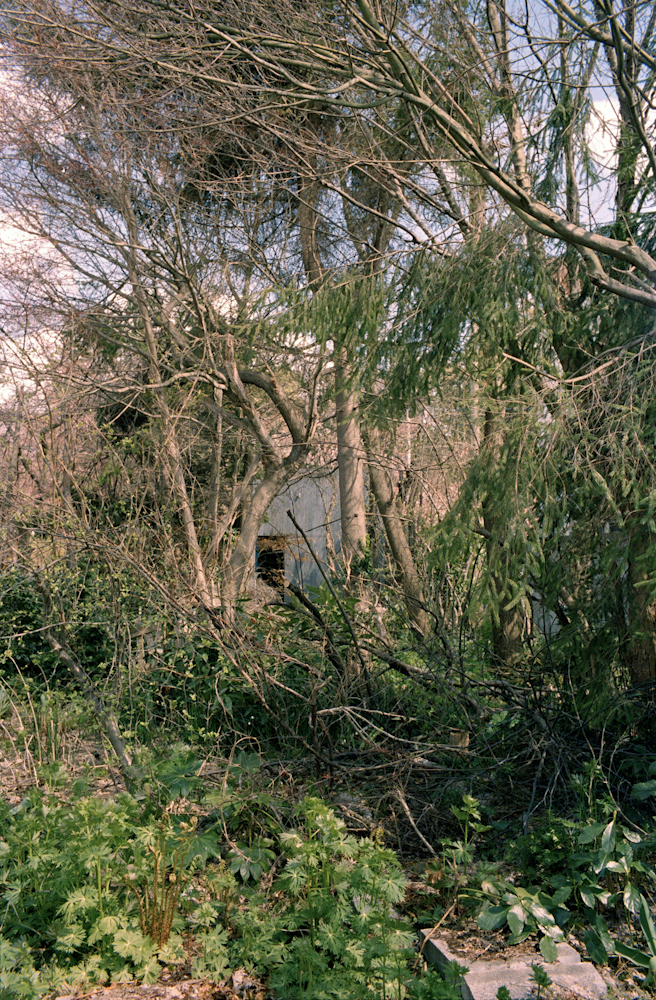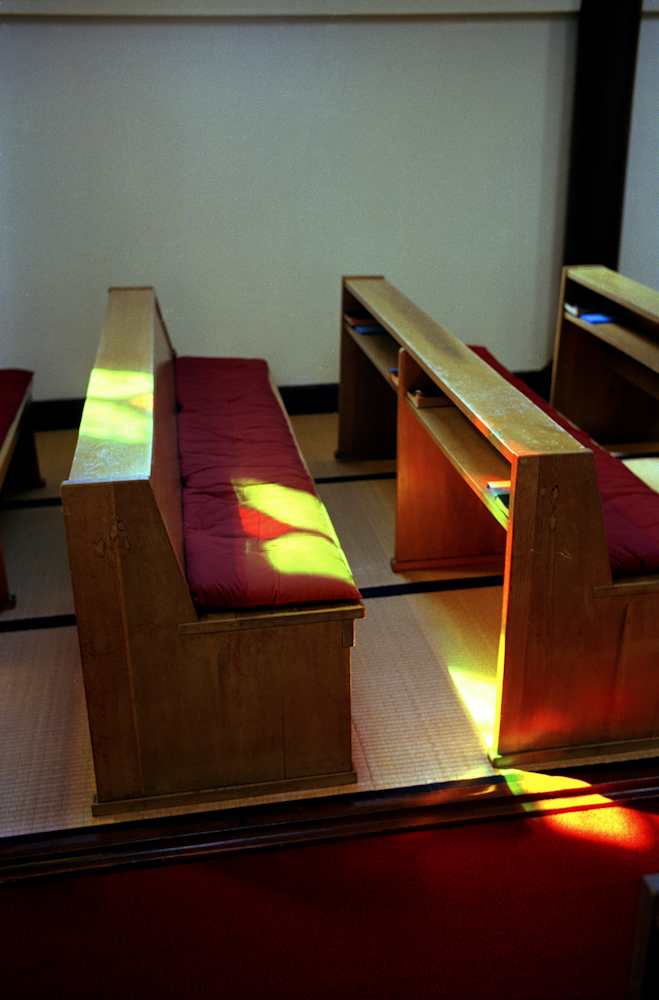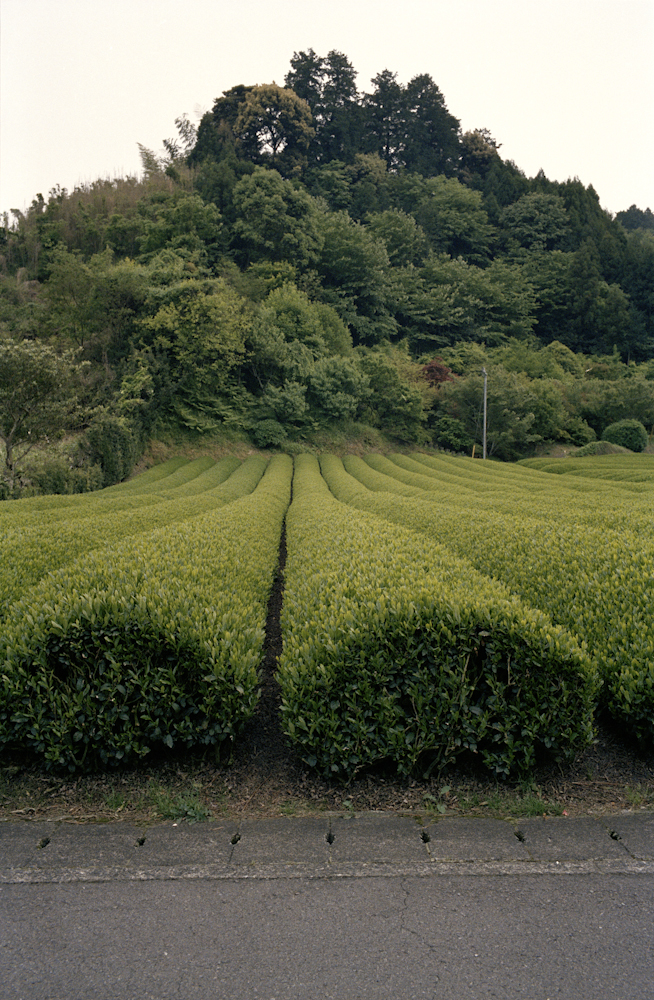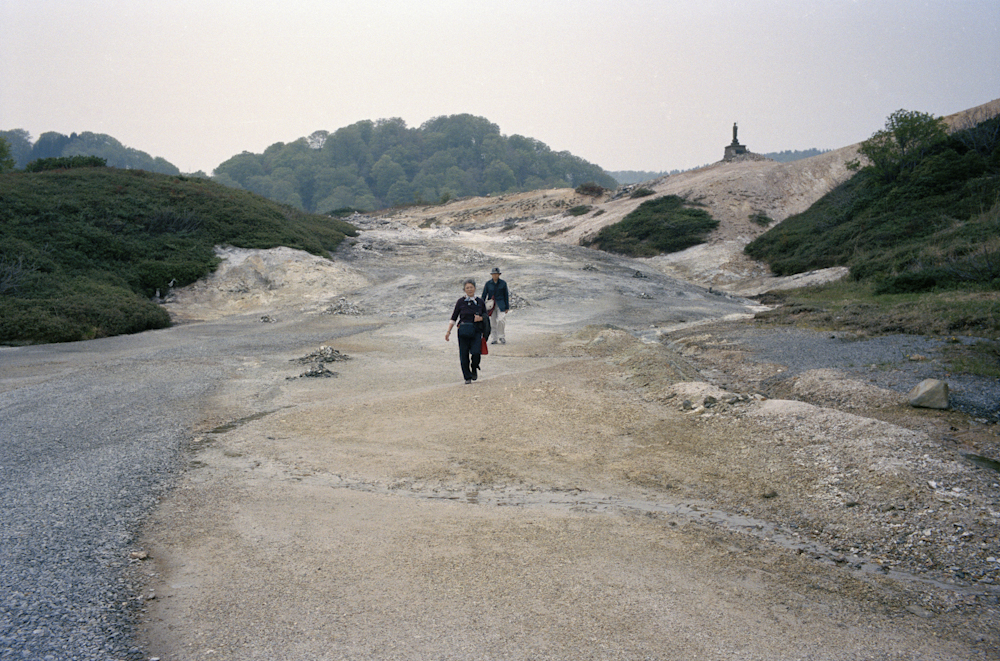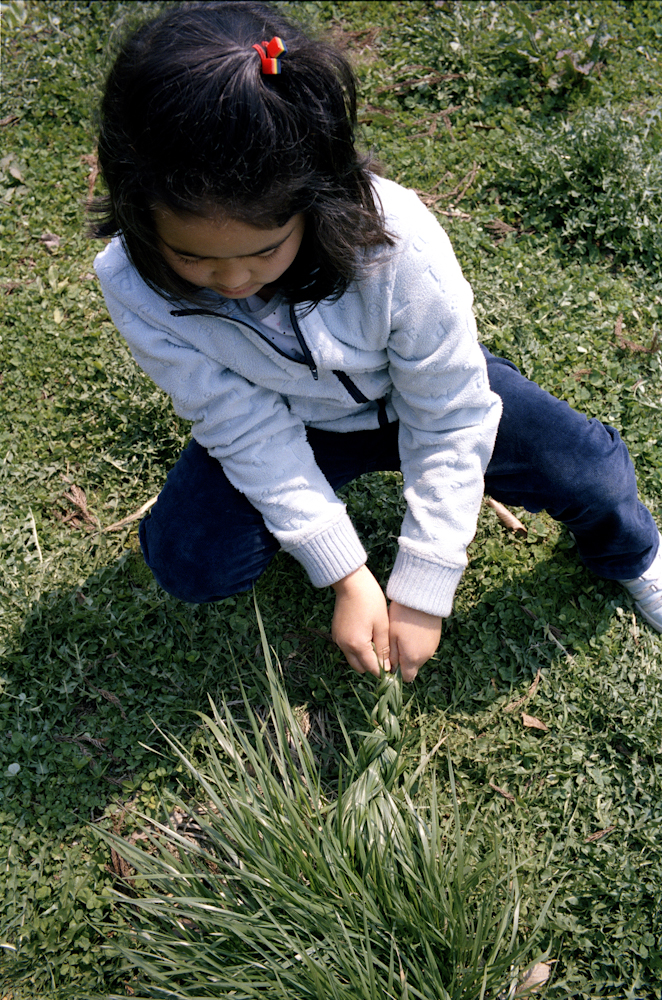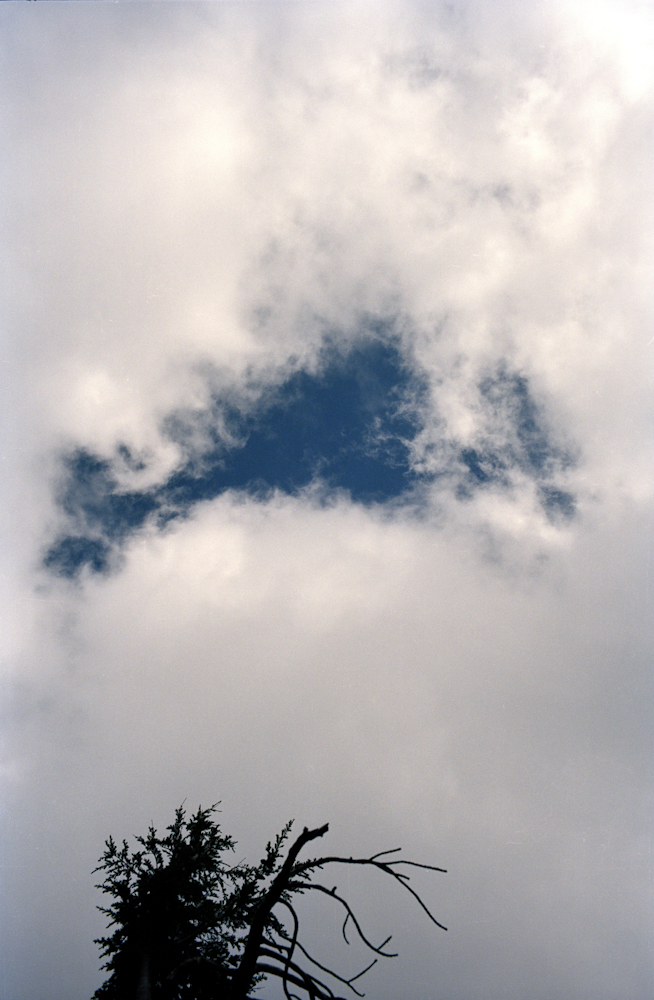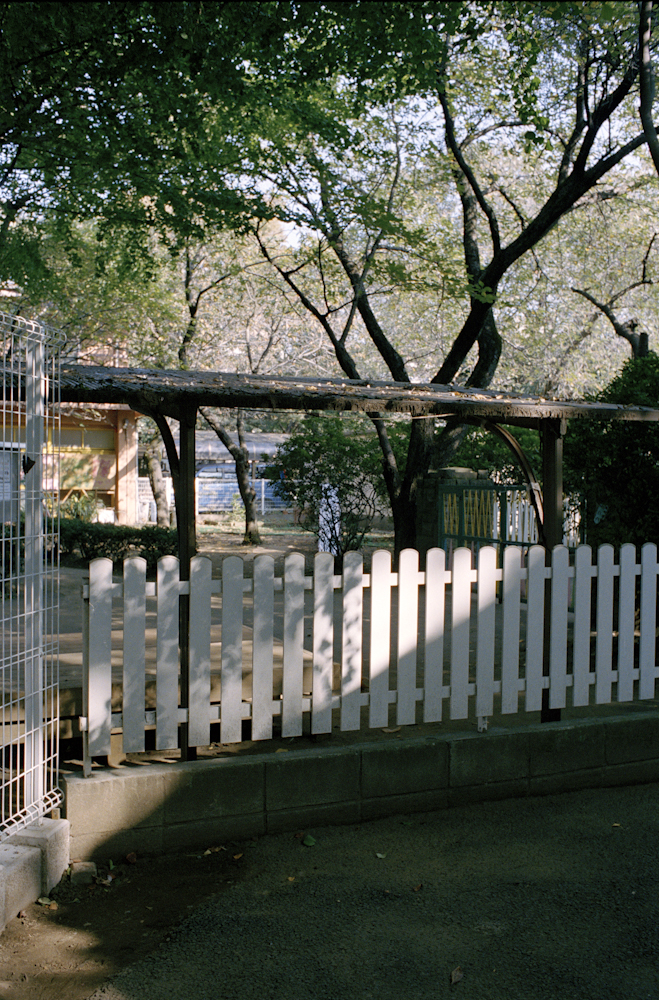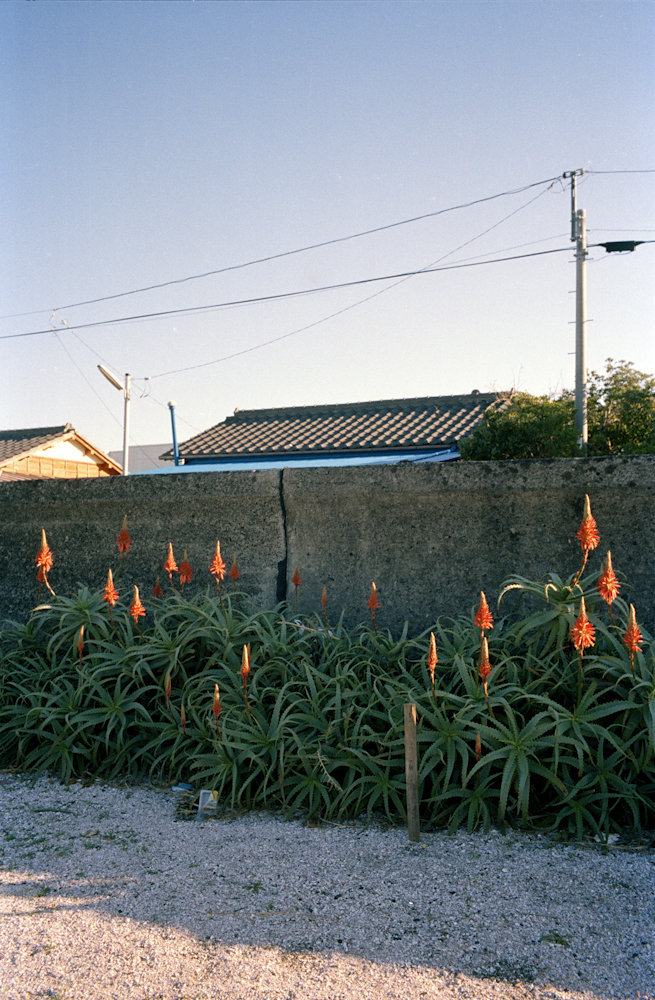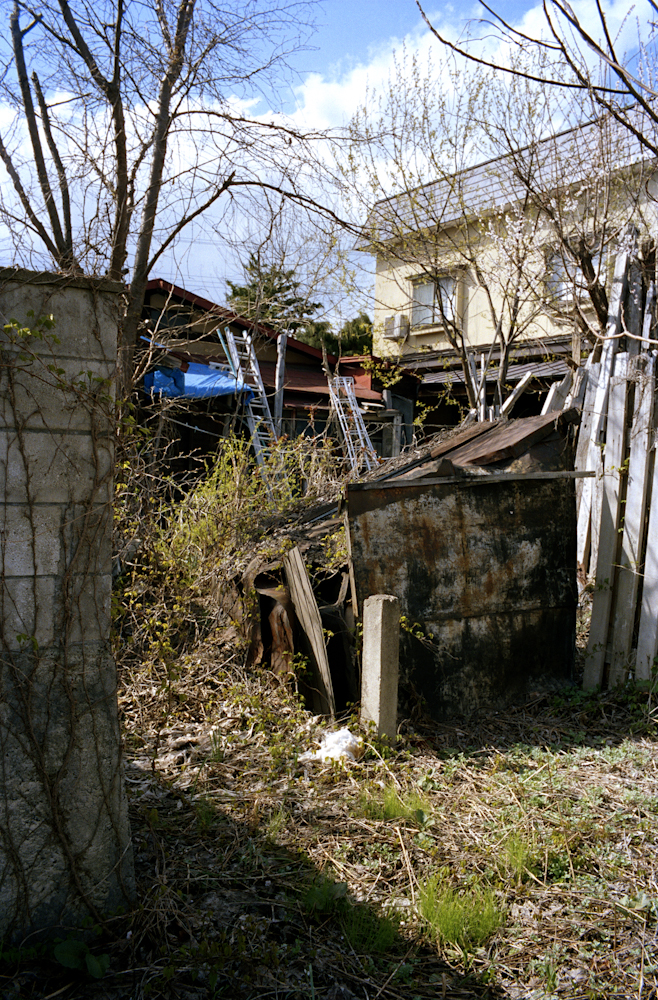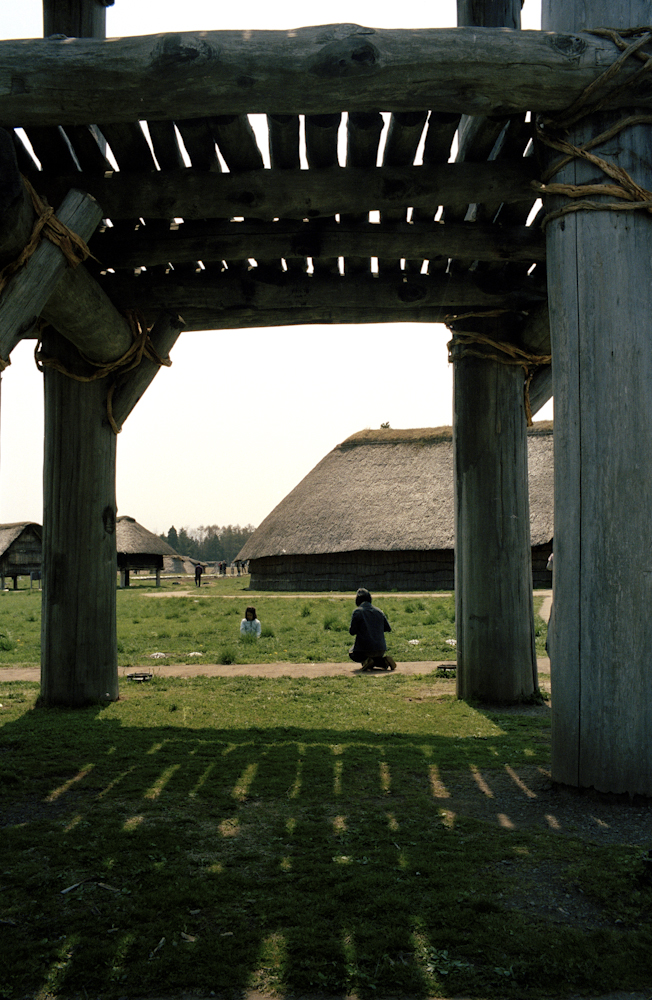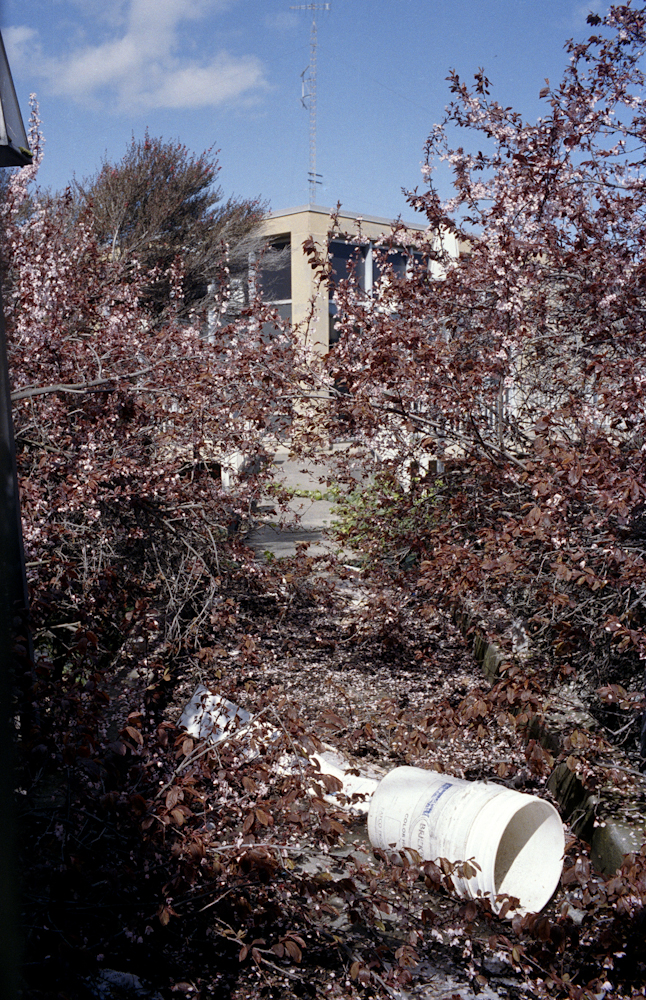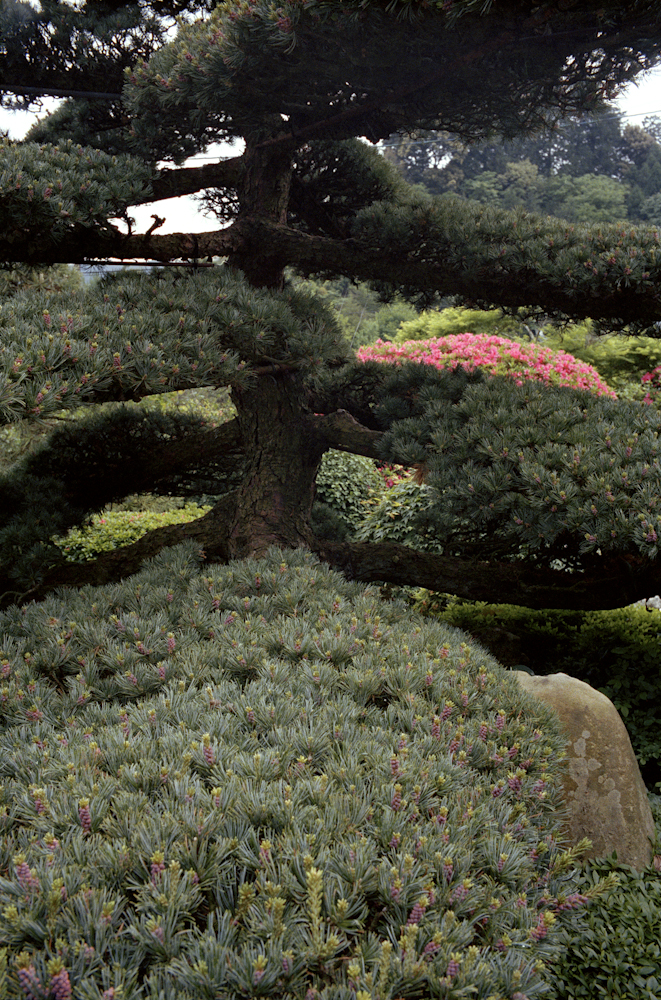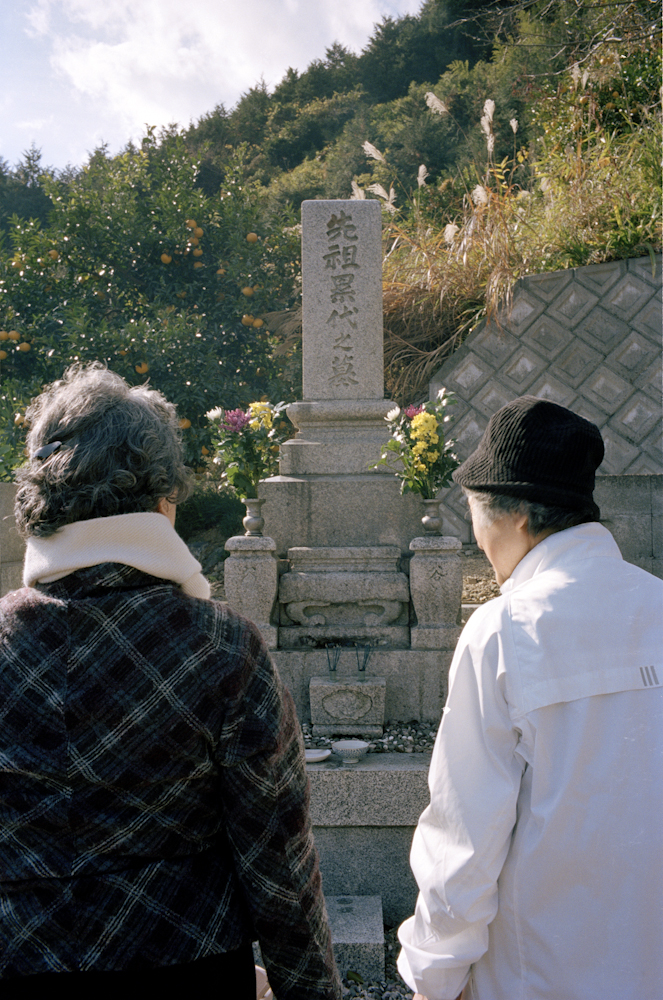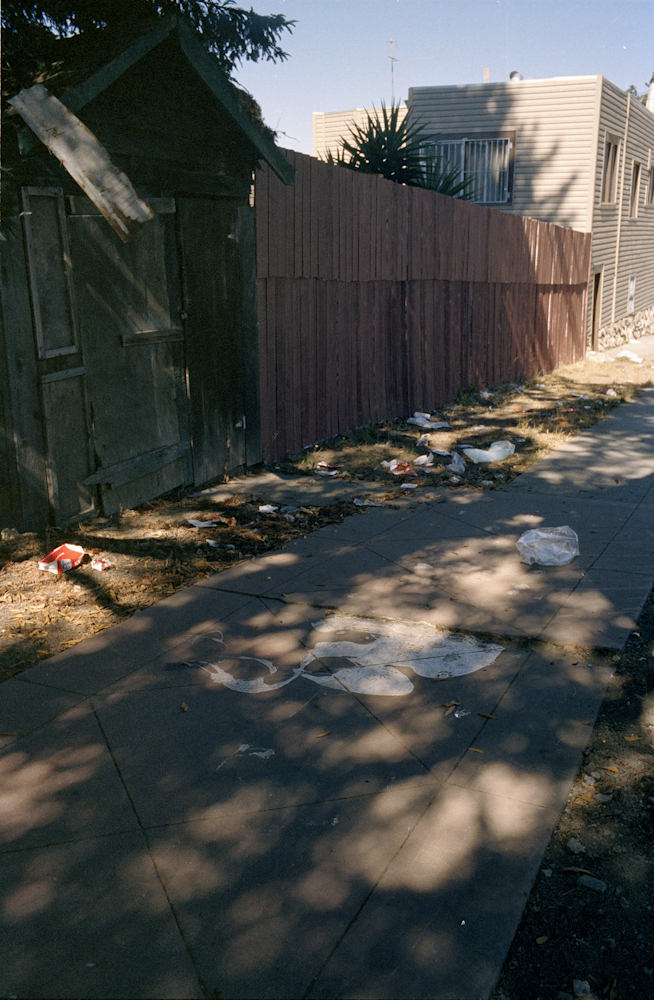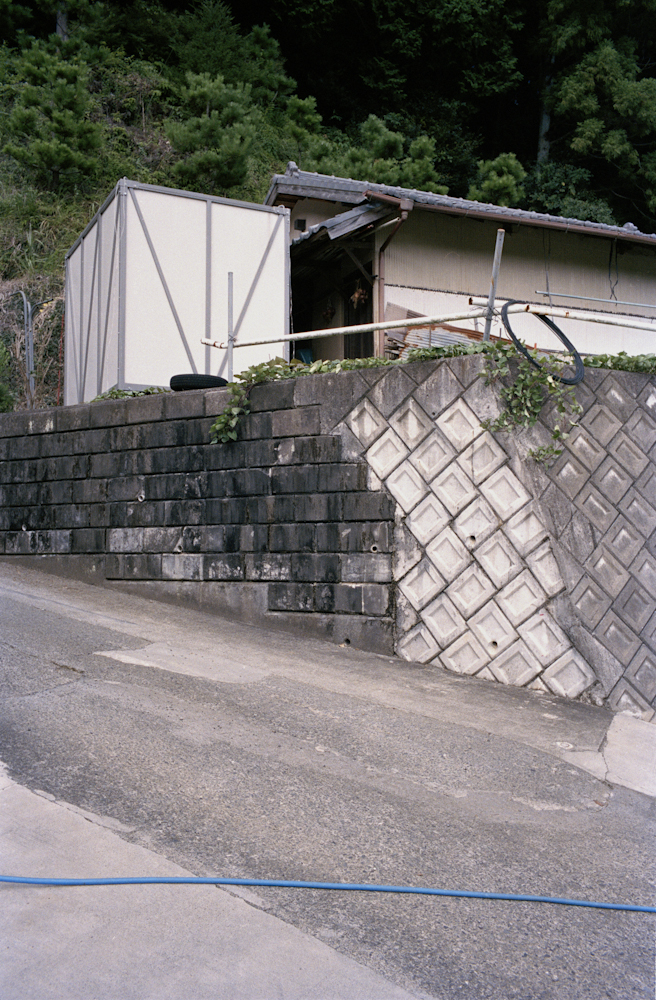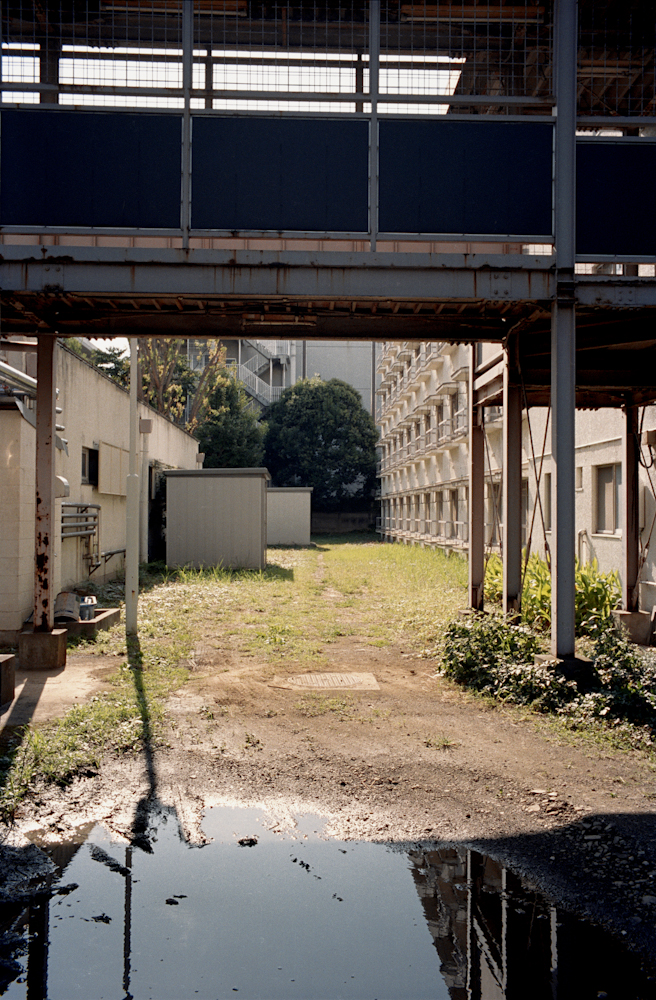Three Cornered World, 2005 – 2009
Some scenes are intriguing for no apparent reason – scenes that catch the eye and evoke a feeling despite seeming ordinary.
This work is composed of images of such scenes that I encountered in San Francisco, Tokyo, and their suburbs. The images from the two different countries naturally contain different types of architecture and vegetation. However, I find that there are always things in common between various environments, and these commonalities stimulate my eye. The pictures taken of Third Street, San Francisco and Ichikawa, Chiba, have been sequenced based on my perspective, movement, and distance in relation to the subject.
Some scenes are intriguing for no apparent reason – scenes that catch the eye and evoke a feeling despite seeming ordinary.
This work is composed of images of such scenes that I encountered in San Francisco, Tokyo, and their suburbs. The images from the two different countries naturally contain different types of architecture and vegetation. However, I find that there are always things in common between various environments, and these commonalities stimulate my eye. The pictures taken of Third Street, San Francisco and Ichikawa, Chiba, have been sequenced based on my perspective, movement, and distance in relation to the subject.
Although things outside are already there independent of my being, they do not create an impression until I move in front of them. These images appeared at the moment when I stood there and released the shutter; they will never appear again. These landscapes exist alone but cannot exist without me, the photographer.
The ambivalent relationship between the outside and my being does not change no matter where I am. Particular scenes born out of this relationship always follow me as if they are matrices of perception which mediate between places and my being, giving me a unique
perspective no matter the location or the situation. As I journey, new experiences give impressions that update these matrices.
“The Three Cornered World” is the English title of the Soseki Natsume novel, Kusamakura. The novel begins with an introduction that is famous among the Japanese:
Going up a mountain track, I fell to thinking.
Approach everything rationally, and you become harsh. Pole along in the stream of emotions, and you will be swept away by the current. Give free rein to your desires, and you become uncomfortably confined. It is not a very agreeable place to live, this world of ours.
When the unpleasantness increases, you want to draw yourself up to some place where life is easier. It is just at the point when you first realize that life will be no more agreeable no matter what heights you may attain, that a poem may be given birth, or a picture created.
My family moved every few years because of my father’s occupation. Each time we moved, I had to learn a new set of locations and know a new set of people. Wandering unfamiliar streets or being alone among strangers was not easy. In Soseki’s novel he writes, “When the unpleasantness increases, you want to draw yourself up to some place where life is easier.” In my case, the unpleasantness increased because of moving frequently without the choice of staying. Nonetheless, I found the same conclusion – when you first realize that life is not agreeable no matter where you go, art is created. In other words, when you become conscious of yourself as a stranger, you begin to see the contingent connection between the things being confronted. Then, the initial unpleasantness changes into an interesting experience capable of giving meaning to a particular location. The corner that I pass to get to my calligraphy lesson on Sunday mornings suddenly appears to me as a unique corner that consists of the bush, the pole, the pavement, and the sunlight at that moment.
The English title, “The Three Cornered World,” comes from this passage in the novel:
When, however, we are describing our journey to someone else, we show not even the slightest hint of discontent. Not only do we tell of the interesting and pleasant things that happened to us, which is only natural, but we even babble on proudly about those hardships long ago of which at the time we complained so bitterly. This is not done with any conscious intent of deceiving or cheating the listener. The inconsistency arises because while actually on the journey our feelings are just the same as those of anyone else. It is only afterwards when we tell our experiences to others that we revert to being artists. Putting it as a formula, I suppose you could say that an artist is a person who lives in the triangle which remains after the angle which we may call common sense has been removed from this four-cornered world.
The word journey in the above passage has been translated from an old Japanese word, “souyuu”, which means “I have once amused myself here.” These photographs are images of such a journey, which are composed of memories of places where I played in my childhood and the landscapes that I encounter now while walking down the street with my camera.
Hiroyo Kaneko
July, 2006

